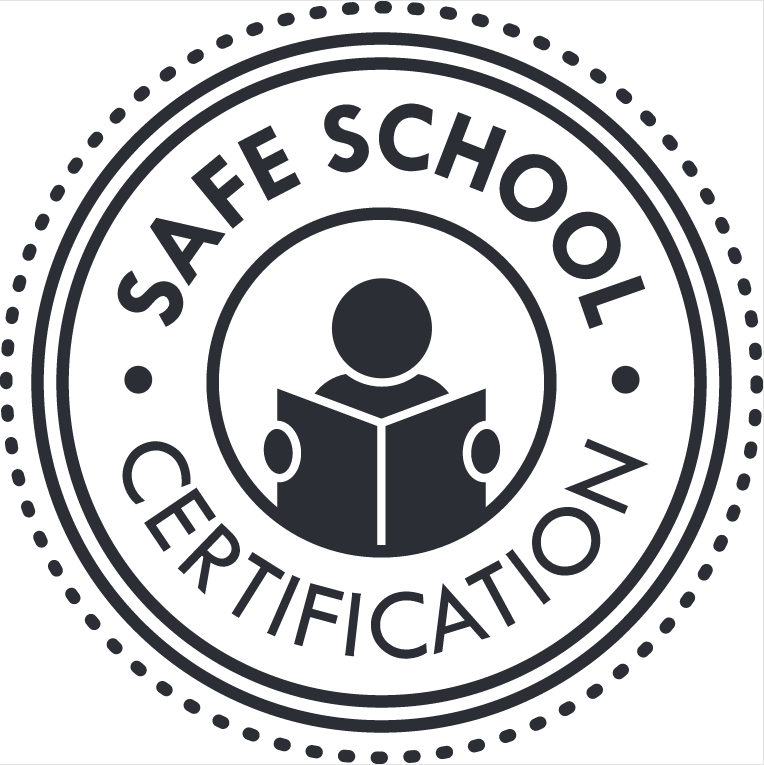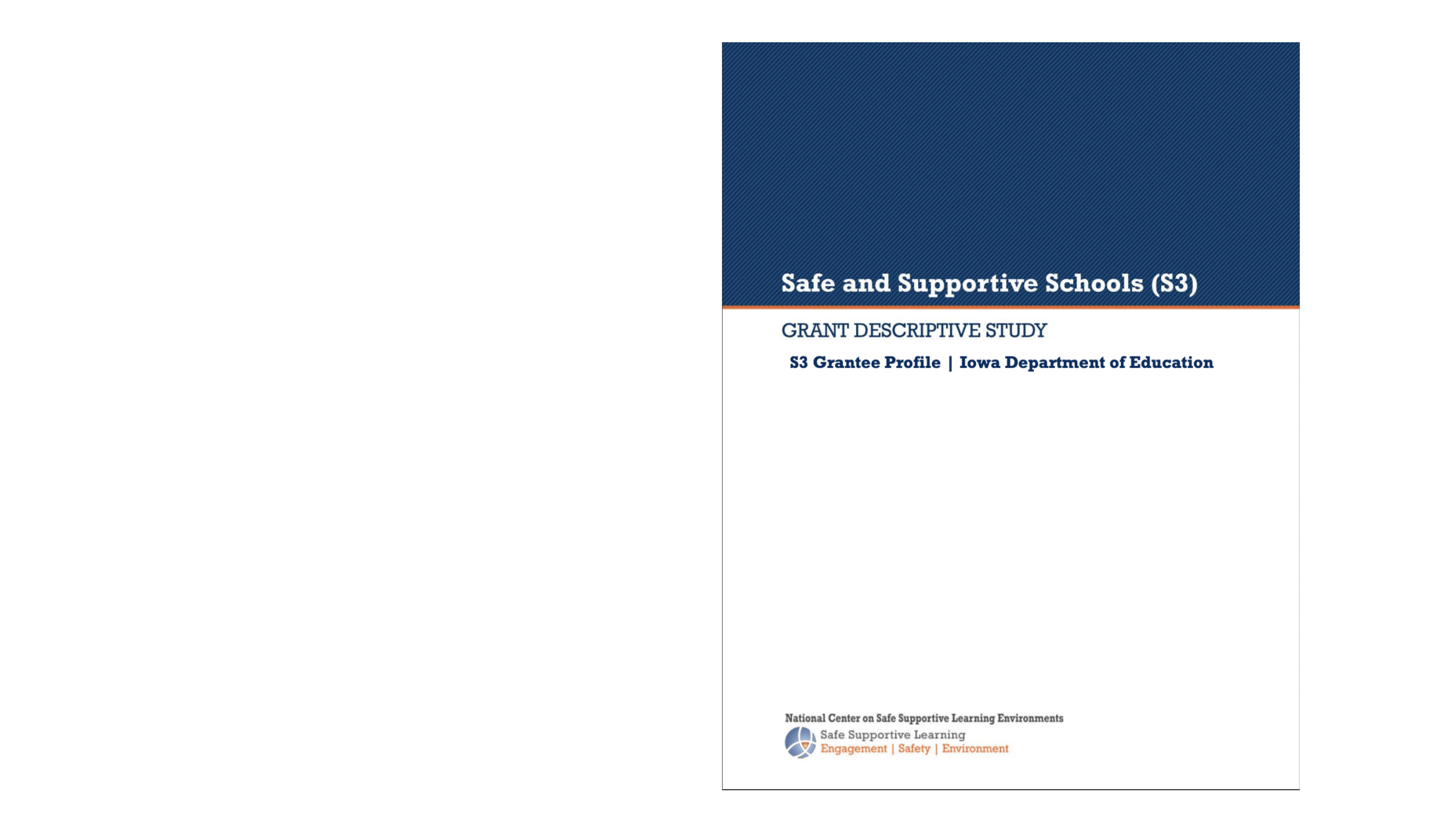We helped recognize and honor schools in Iowa doing exemplary work.
When the Iowa Department of Education was awarded federal funds through the U.S. Department of Education’s Safe and Supportive Schools grant, they looked to Safe School Certification (SSC) to help recognize and honor schools doing exemplary work.
Site
Iowa
timeframe
2010-2014
Team
Ryan M. Roemerman Brent Robins Kristin Aschenbrenner Gayle Canada
―
Iowa Safe and Supportive Schools (IS3 ) was a federal grant that sought to understand the optimal conditions for learning and provided financial support for select schools to leverage resources toward maximum benefit for students, their families and the school personnel who support them.
All schools participating in IS3 were required to pass the policy audit conducted by Safe School Certification. This detailed review of each district’s anti-bullying and harassment policy helped determine the extent to which it complied with Iowa Code 280.28, Iowa’s anti-bullying/harassment law passed in 2007. Once the policy requirements were met, the SSC worked with individual schools to implement the policy with fidelity, utilizing the SSC framework.
All schools pursuing certification achieved it by implementing their own action plan that addressed their school’s specific needs related to bullying. SSC staff consulted with the schools in partnership with a Learning Support Consultant from the local Area Education Agency (AEA).
We provided guidance and encouragement to the school as it navigated its own course toward meeting the expectations for certification. We did not tell the school what to do, nor did we do all of the work for them. Instead, we facilitated a dialogue around the 8 Elements that helped the school recognize its current reality and determined what steps they needed to take to improve it.
As of April 2012, 34 schools had their policy audited and had received feedback based on that review. These 34 schools consist of all 20 funded IS3 Program schools and 14 IS3 Program survey schools who did not receive funding, but requested an audit be completed.
What we learned:
1.
The majority of IS3 School were not law compliant.
Overall, each of the 16 policy requirements within the law were met by an average of 90% of the schools. Of those 16 requirements, 14 requirements were met by 88% or more of the schools. Two requirements (10 and 16) were met by fewer than 88% of the schools.
The following patterns were noted which may help explain the results for these two requirements:
Requirement 10: Many schools adopted the sample anti-bullying policy that was provided by the Iowa Department of Education before realizing that it did not include the provision that investigators will consider the totality of the circumstances when investigating bullying allegations. The correct version of the sample policy has since been updated on the Department of Education’s web site.
Requirement 16: Many schools’ non-discrimination statements were not compliant with the Iowa Civil Rights Act. Specifically, many of them did not list all of the protected traits/characteristics required by the law, which was amended in 2007 to include sexual orientation and gender identity. While some policies left out these two most recent additions to the law, it was more common that the terms “creed” or “national origin”were missing. Also, some schools substituted the term “gender” for “sex”. Many schools listed more protected traits than required by the Civil Rights Act, but this may be due to various administrative rules and requirements that apply specifically to the non-discrimination statement.
Other Results of Note:
Requirement 2: Creed, sexual orientation, and gender identity were the most common traits/characteristics left out of policies. In some cases, schools substituted the term “gender” for “sex”. We encouraged them to adhere to the language used in the law (“sex”). In some cases, other traits were missing, but no obvious pattern could be identified.
Requirements 11 & 12: Some schools did not include information about the way in which their anti-bullying/harassment policy would be publicized and made available to students, families, and school staff. Typically this can be addressed by noting in the policy that it will be published in the student handbook, staff handbook, school web site, etc. with a physical copy available at the school and/or central office.
Note: One other inconsistency with the policies overall was citing “Senate File 61…” in the legal references section. When the anti-bullying/harassment bill was passed into law, it became codified as Iowa Code 280.28. We encouraged schools to update their legal references accordingly. We did not count this against them within their audit results.
Overall, schools have earned very favorable audit results, were receptive to the feedback they received, and were anxious to take the necessary steps to amend their policies based on the audit recommendations provided.
2.
Developing checkpoints and communities of practice was critical to continuing engagement. To ensure schools had enough time to thoughtfully engage, we developed two checkpoints: Checkpoint 1 for the first three elements and Checkpoint 2 for the final five, with a final certification checkpoint at the end. This provided clearer cadence as schools moved through certification and allowed the teams to experience wins early, providing momentum.
3.
Training LEA specialists provided needed assistance to schools taking part: The benefit of the AEA Coordinator/Coaches were generally perceived as essential by both the LEA Principals and the LEA Coordinators. It was suggested the external coordinators bring a real sense of support to the LEA Principal with a regularity of contact, an increase in expectations, and an unobtrusive way of increasing the level of accountability to meet the integrity of the grant.
© 2024 Safe School Certification




